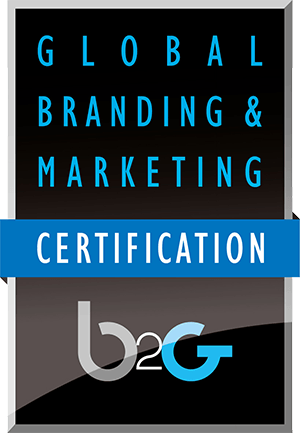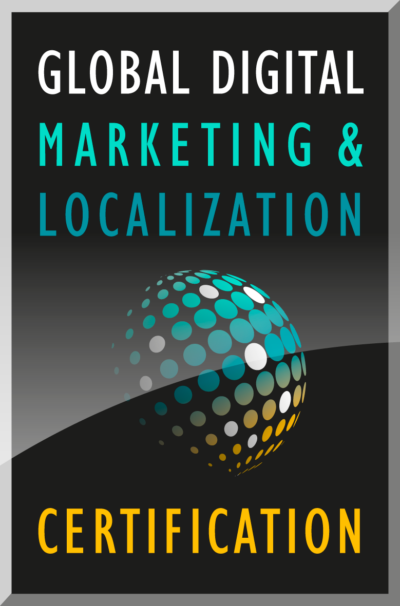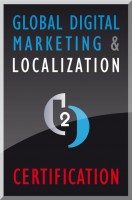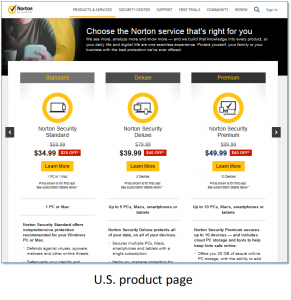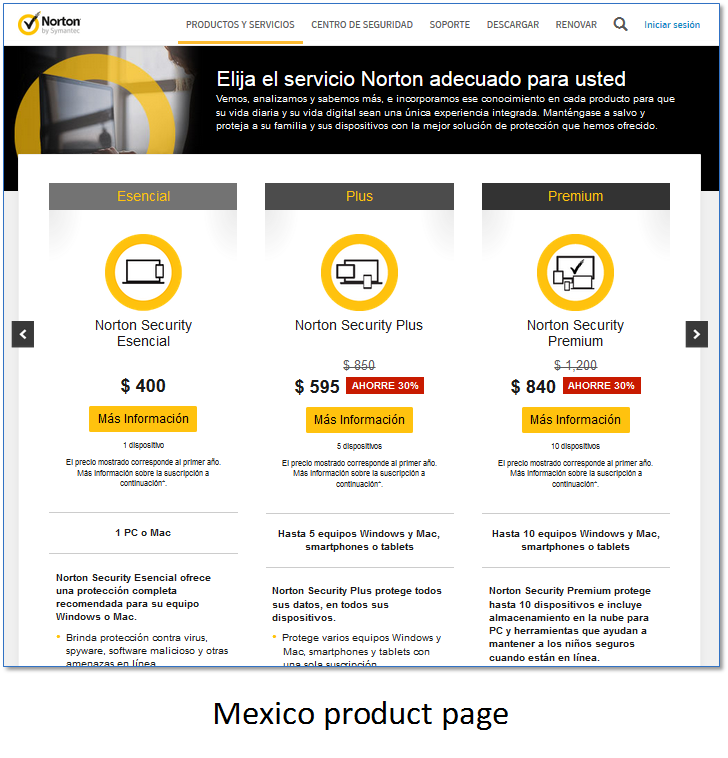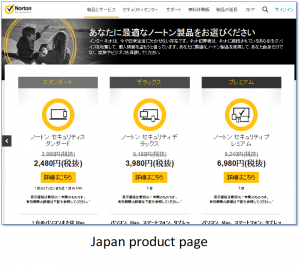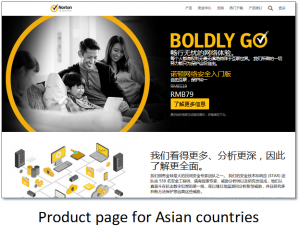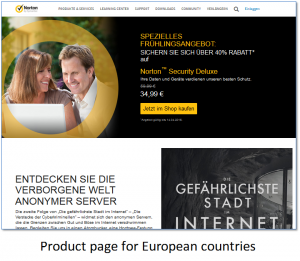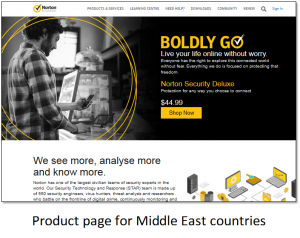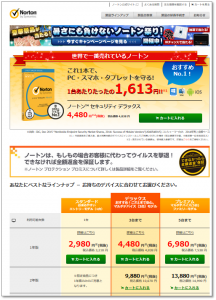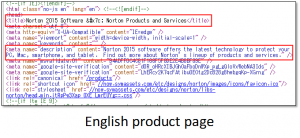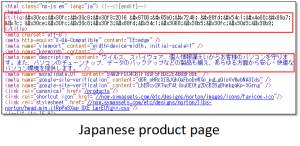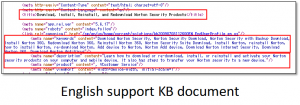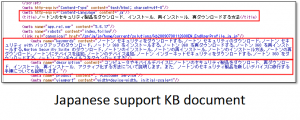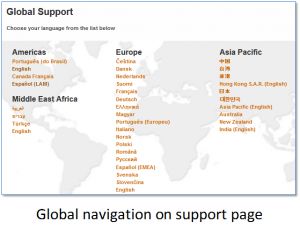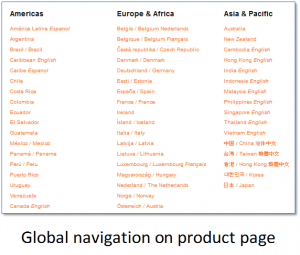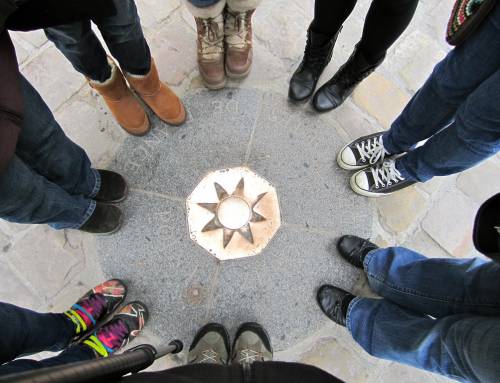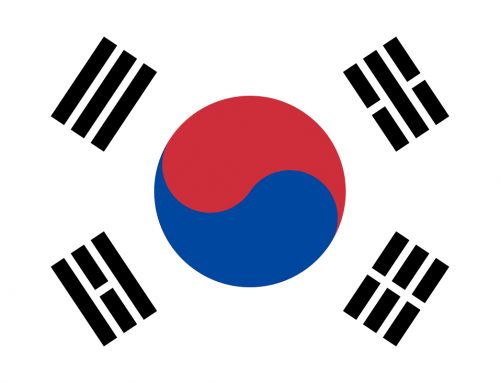This is the final paper presented by Takako Sakashita, a recent graduate of the Global Digital Marketing and Localization Certification (GDMLC) program. This paper presents the work being produced by students of The Localization Institute’s Global Digital Marketing and Localization Certificate program. The contents of this Paper are presented to create discussion in the global marketing industry on this topic; the contents of this paper are not to be considered an adopted standard of any kind. This does not represent the official position of Brand2Global Conference, The Localization Institute, or the author’s organization.
INTRODUCTION:
The Symantec (Norton) consumer marketing team is responsible for introducing a global customer base to the Norton brand and offerings. As the industry has shifted to more online acquisition, so too did Norton. With renewed focus on online marketing and sales to expand the customer base, Norton believes that it is critical that the online content be delivered simultaneously around the globe. It is also critical that the brand experience be consistent but sensitive to regional differences in culture and values, and delivered through value-added customer experiences that include customization and personalization.
OVERVIEW:
The Norton website can be divided into various segments including product pages in the marketing experience and support pages in the support experience. I analyzed the Norton website pages in different languages from the perspective of globalization. Both segments employ a global strategy with a certain degree of regionalization. In the Case Studies section, I will identify in more depth some of the best practices being utilized as well as opportunities for improvements where suitable.
CASE STUDIES:
CASE 1 – STANDARDIZED TEMPLATE AND LOCALIZATION
Best Practice:
Standard templates are used to deliver consistent global content design. At the same time, campaign, price, and product names are customized.
Looking more closely, we can see some more specific examples of regionalization. The site for Asian countries shows an image with Asian people while the site for Europe countries shows an image with Western people. Each image reflects cultural values appropriate to each region. For instance, the image for Asian countries shows collectivism while the image for Middle East countries symbolizes individualism. The picture for European countries represents the middle level of collectivism and individualism as well as masculinity and femininity. For some, these representations may also symbolize a focus on the equality of men and women.
Moreover, to cater more to Asian online preferences, an option to go to the local store website to read detailed information about products and campaigns supplements the information found in the global Norton product pages. The local store website shows more characteristics of Asian cultures by leveraging more colors than the Norton product website.
From an SEO perspective, on the product pages, ‘title’ tag and ‘description’ meta tag contain SEO texts that are regionalized for each language and optimized for regional search engines. On the support pages, each Knowledge Base document contains ‘title’, ‘keywords’ and ‘description’ meta tags to match the regional document context.
Suggestions:
Although standardized templates are used, there is a distinct difference in look and feel (design) between the product and support pages. These differences exist globally and can lead to customer confusion about whose site they are really on.
In addition, each page contains too much text for customers in ‘low-context cultures’. Instead, Norton might be more successful in these cultures if Norton first navigates customers to a page with more intuitive information that resonates with them such as a comparison table of each product or key characteristics, and then navigate them to a more detailed product-specific page.
Regarding the SEO, in the product pages, the ‘keywords’ tag may be additionally used to add locale-specific terms since the tag is already available but with empty values. In the support pages, it looks like ‘description’ and ‘keywords’ are translated but not localized, although it seems that English SEO texts are translated with popular terms in local languages. Regional SEO could be improved by adding a regional SEO meta tag field to the existing global keyword and description meta tags.
Lastly, sometimes action-oriented marketing terms are difficult to regionalize. Norton’s ‘Boldly Go’ campaign was presented untranslated rather than presented conceptually, although culturally, this can be much more challenging than it sounds. Some concepts simply do not regionalize well.
CASE #2 – GLOBAL NAVIGATION
Best Practice:
The global product page gateway is available on the website in case browser settings do not work properly, and the country names in the product pages are presented in local languages when those languages are supported. On the support pages, the global support gateway page shows language names in local languages. This difference is because the product pages operate around country and currency while the support pages operate around language. It should be noted that neither version includes flags, which can connote political implications.
Suggestions:
The location of the global gateway should be consistent throughout the website. The global gateway is located in a different place on product pages and on support pages: in the left-bottom corner and in the right-top corner. Recently some companies have placed their global gateway location other than in the top-right corner of their websites such as Microsoft where the global gateway is located in the left-bottom corner, and VMware where it is located in the top-left corner. It might not be necessarily located in the top-right corner, but it must be good to align with the general trend so that customers can find global gateway pages more easily.
One more thing Norton can amend in the gateway page on the product pages is inconsistency regarding providing of country names in local languages or not. For instance, English country names are provided for many European countries next to local country names although local language pages are rendered after the country names are clicked. Asian countries such as Indonesia and Malaysia have ‘English’ next to the country names so customers know English pages will be shown. For United Arab Emirates, even if the Arabic product page is not supported, ‘English’ is not added to the country name. For Israel, the local country name (‘ישראל’) is provided, but the Hebrew product page is not supported and the English page is shown instead.
CASE #3 – SUPPORT EXPERIENCE
Best Practice:
The support pages in each language provide locale-specific lists of Knowledge Base topics. Global, regionally agnostic icons help customers understand the meaning of the menu items intuitively. In addition, there is a search field in the top-right corner on all pages.
Next, a personalized support experience is available based on customer’s installed product after signing into their Norton account.
Furthermore, Forum support is available for a subset of languages that can support enough users to remain valuable to other customers. Twitter and Facebook are also accessible to customers in some of these high usage languages.
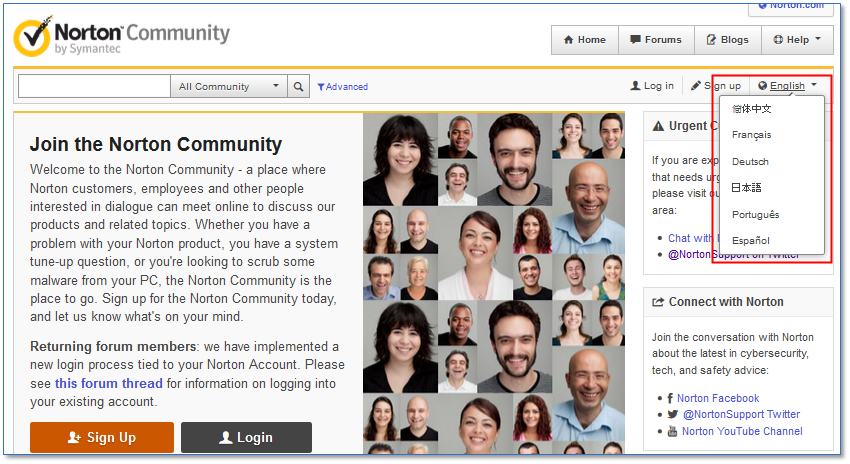
Suggestions:
The Corporate color palette is dominated by combinations of yellow and black, and the product pages take advantage of it to give the impression to customers from the perspective of brand strategy. However, the support pages do not inherit the corporate color palette. As previously mentioned, inconsistency in color and design can lead to customer confusion.
The support pages provide rich and detailed information. However, there are too many links in one page that can reduce the ability of customers to quickly find the information they want. The banner at the top of the support page also dominates the overall page, which pushes information down below the fold for many monitor resolutions.
As for Forum support, a more diverse group of people (made up of a combination of Western and Asian cultures) might better represent a community that the global community can participate in.
CONCLUSION:
The Norton website is well contemplated and global localization is achieved to an extent through customized pricing, marketing campaigns and product naming. Nevertheless there is room for improvement in terms of site structure and webpage development.
First, the product pages and the support pages can move closer together and implement simple navigation to avoid puzzling customers. From a development perspective, local teams can get more involved in customization or localization if the pages are more flexible in their design. This leads to better user experience as well as customers’ satisfaction in each locale.
As a result, Norton can acquire new customers or retain existing customers by providing a good impression of customer experience and brand image.
Copyright © 2016 The Localization Institute. All rights reserved. This document and translations of it may be copied and furnished to others, and derivative works that comment on or otherwise explain it or assist in its implementation may be prepared, copied, published, and distributed, in whole or in part, without restriction of any kind, provided that the above copyright notice and this section are included on all such copies and derivative works. However, this document itself may not be modified in any way, including by removing the copyright notice or references to The Localization Institute, without the permission of the copyright owners. This document and the information contained herein is provided on an “AS IS” basis and THE LOCALIZATION INSTITIUTE DISCLAIMS ALL WARRANTIES, EXPRESS OR IMPLIED, INCLUDING BUT NOT LIMITED TO ANY WARRANTY THAT THE USE OF THE INFORMATION HEREIN WILL NOT INFRINGE ANY OWNERSHIP RIGHTS OR ANY IMPLIED WARRANTIES OF MERCHANTABILITY OR FITNESS FOR A PARTICULAR PURPOSE.


